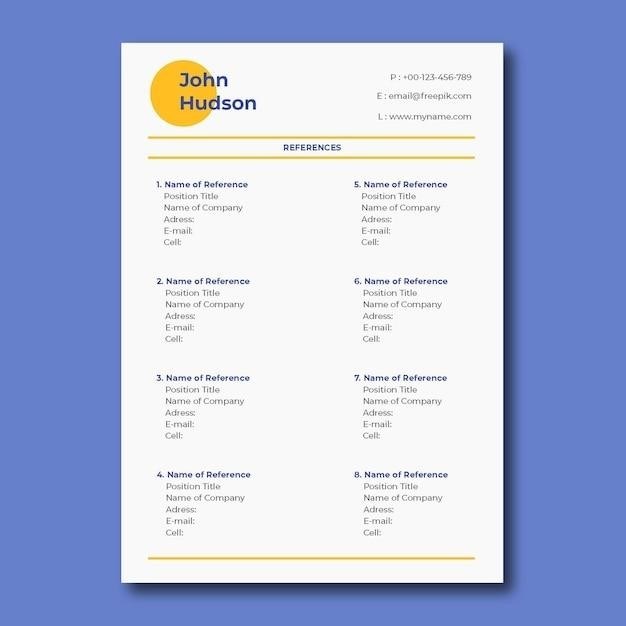printable 18 doll clothes patterns pdf free
This article provides a comprehensive guide to finding and using free printable 18 doll clothes patterns. It covers various types of patterns, popular doll brands, free resources, printing and sewing tips, beginner-friendly patterns, advanced patterns for experienced sewers, finding free tutorials, customizing patterns, and concluding with a summary of key points.
Introduction
The world of 18-inch doll clothes is a vibrant and creative one, offering endless possibilities for imaginative play and personalized doll fashion. With the abundance of free printable PDF patterns available online, crafting custom outfits for your beloved dolls has never been easier or more affordable. Whether you’re a seasoned sewer or a beginner eager to try your hand at doll dressmaking, these patterns provide a fantastic starting point for bringing your doll’s wardrobe dreams to life.
These patterns are designed to be user-friendly, featuring clear instructions and detailed diagrams that guide you through each step of the sewing process. They cater to various skill levels, from simple designs perfect for beginners to more intricate patterns that challenge experienced sewers. The joy of using these patterns lies in the freedom to choose from a diverse range of styles, from classic dresses and skirts to trendy tops and even adorable accessories.
This comprehensive guide explores the world of free printable 18 doll clothes patterns, offering insights into the types of patterns available, popular doll brands, valuable resources, and essential tips for printing, sewing, and customizing your creations. So, gather your sewing supplies, let your creativity flow, and embark on a delightful journey of crafting personalized outfits for your cherished 18-inch dolls.
Types of Patterns Available
The world of free printable 18 doll clothes patterns is incredibly diverse, offering a wide range of styles and designs to suit every taste and occasion. From classic dresses and skirts to trendy tops and even adorable accessories, you’ll find patterns to create a complete wardrobe for your dolls. Here’s a glimpse into the various types of patterns you can explore⁚
- Dresses⁚ Whether you’re looking for a simple sundress, a whimsical party dress, or a cozy winter dress, there are countless patterns to choose from. Explore styles like A-line, fit and flare, empire waist, and more.
- Skirts⁚ From mini skirts to maxi skirts, you’ll find patterns for every length and style. Explore pleats, ruffles, and various skirt shapes to create unique looks for your dolls.
- Tops⁚ You’ll discover patterns for a wide array of tops, including t-shirts, blouses, sweaters, and even tank tops. Experiment with different necklines, sleeves, and embellishments to create a diverse collection.
- Accessories⁚ Add a touch of flair to your doll’s wardrobe with accessories like hats, scarves, bags, and shoes. Explore patterns for various styles and sizes to complement any outfit.
- Outfits⁚ Many patterns offer complete outfit designs, including a top, skirt, or pants, and sometimes even accessories, making it easy to create a cohesive look for your dolls.
With such a wide array of options, the possibilities for creating unique and stylish outfits for your dolls are endless.

Popular Doll Brands
Free printable 18 doll clothes patterns are often designed specifically for popular doll brands, ensuring a perfect fit and a seamless look. Here are some of the most common doll brands that you’ll find patterns for⁚
- American Girl⁚ As one of the most beloved doll brands, American Girl dolls have a vast array of free printable patterns available. You’ll find patterns for dresses, skirts, tops, and accessories, allowing you to create a complete wardrobe for your dolls.
- Our Generation⁚ Our Generation dolls, known for their diverse and inclusive designs, also have a good selection of free printable patterns. These patterns often feature contemporary styles and trends, allowing you to keep your dolls looking fashionable.
- BFC Ink Dolls⁚ BFC Ink dolls are known for their unique and detailed designs. While free printable patterns for these dolls may be less common, you can find a few patterns online, especially for accessories and basic garments.
- Ellowyne Wilde Dolls⁚ Ellowyne Wilde dolls are renowned for their vintage and whimsical charm. You can find free printable patterns designed specifically for these dolls, often featuring classic styles and intricate details.
- Karito Kids⁚ Karito Kids dolls are known for their adorable and playful designs. While free printable patterns for these dolls might be limited, you can find some online, particularly for basic garments and accessories.
- Hearts 4 Hearts⁚ Hearts 4 Hearts dolls are known for their diverse and inclusive designs. While free printable patterns for these dolls might be limited, you can find some online, particularly for basic garments and accessories.
These are just a few of the popular doll brands that you’ll find free printable patterns for. The best way to find patterns for your specific doll is to search online using the doll’s brand name and “free printable patterns.”
Free Resources for Patterns
The internet is a treasure trove of free printable 18 doll clothes patterns, offering a vast array of styles and designs to suit any taste. Here are some of the best resources to explore⁚
- Pixie Faire⁚ This website is a popular destination for free printable doll clothes patterns, featuring a wide selection of designs for various doll brands. You can browse by category, doll size, or even by specific doll brand to find the perfect pattern for your needs.
- Threads Monthly⁚ This website offers a curated collection of free printable doll clothes patterns, along with helpful tips and tutorials for sewing doll clothes. Their collection includes patterns for various styles, from basic garments to more elaborate outfits.
- Printablee⁚ This website offers a variety of free printable patterns, including doll clothes patterns. Their selection features patterns for different doll sizes and brands, allowing you to find the perfect fit for your dolls.
- Little House Living⁚ This blog features a dedicated section for free printable doll clothes patterns, offering a range of designs for 18-inch dolls. You’ll find patterns for various garments, from simple dresses to more intricate outfits.
- Appletotes⁚ This website offers a collection of free printable patterns for various crafts, including doll clothes. Their selection features patterns for 18-inch dolls as well as smaller dolls, ensuring you can find the perfect fit for your doll.
- Sewing With Scraps⁚ This website features a curated list of 10 free printable doll clothes patterns, offering a variety of styles and designs for 18-inch dolls. The patterns are easy to follow and perfect for beginners.
- Pinterest⁚ Pinterest is a great platform for finding free printable doll clothes patterns. Simply search for “free printable 18 doll clothes patterns” and you’ll find a wealth of inspiration.
Remember to check the website’s terms and conditions to ensure that you’re allowed to print and use the patterns for personal use.
Tips for Printing and Sewing
Once you’ve found the perfect free printable 18 doll clothes patterns, it’s time to bring your sewing project to life. Here are some helpful tips for printing and sewing⁚
- Print at 100% Scale⁚ Always print your patterns at 100% scale to ensure accurate sizing. Avoid scaling the pattern up or down, as this can distort the measurements and result in ill-fitting garments.
- Use High-Quality Paper⁚ Choose a sturdy paper like cardstock or printer paper to ensure that your patterns hold their shape and don’t tear easily. This will make cutting and handling the patterns much easier.
- Test the Fit⁚ Before cutting out your fabric, it’s a good idea to test the fit of the pattern by pinning it to your doll. This will help you make any necessary adjustments to the pattern before you start sewing.
- Choose the Right Fabric⁚ Selecting the appropriate fabric is crucial for a successful sewing project. Consider the type of garment you’re making, the doll’s size, and the desired look. Cotton fabrics are a popular choice for doll clothes due to their softness and ease of sewing.
- Use a Sewing Machine⁚ While hand-sewing is possible, using a sewing machine can make the process faster and more efficient. A sewing machine will also give you a cleaner and more professional finish for your doll clothes.
- Use a Sharp Pair of Scissors⁚ Sharp scissors are essential for cutting out your fabric accurately and cleanly. Dull scissors can cause frayed edges and make it difficult to sew precisely.
- Take Your Time⁚ Don’t rush the sewing process. Patience and attention to detail are key to creating beautiful and durable doll clothes.
These tips will help you create beautiful doll clothes that your little one will love.
Easy Patterns for Beginners
If you’re new to sewing doll clothes, starting with easy patterns is a great way to build confidence and learn the basics. Many free printable patterns are designed specifically for beginners, offering simple designs and clear instructions. Here are some examples of easy patterns you can try⁚
- Simple Skirts⁚ A basic skirt pattern is a great starting point, as it requires minimal sewing skills and can be easily customized with different fabrics and embellishments. Look for patterns that feature a gathered or elastic waistband for easy assembly.
- T-shirts⁚ T-shirts are another excellent choice for beginner sewists. They typically involve simple seams and a straight hem, making them relatively easy to sew. You can find patterns for different styles, including basic crew necks, V-necks, and even short-sleeved options.
- Basic Dresses⁚ Simple dress patterns are often available for beginners, featuring a straight or A-line silhouette with minimal embellishments. These patterns usually include clear instructions for gathering the skirt and sewing the bodice, making them ideal for learning basic dressmaking techniques.
- Hats⁚ Hats can be fun and easy to sew, especially if you choose a simple design like a beanie or a sun hat. These patterns often involve basic shapes and minimal seams, making them approachable for novice sewists.
Remember to choose patterns that are clearly illustrated and have detailed instructions. Don’t be afraid to ask for help from more experienced sewists or refer to online tutorials for additional guidance. With a little practice and patience, you’ll be creating adorable doll clothes in no time.
Advanced Patterns for Experienced Sewers
For seasoned sewists looking for more challenging projects, there are plenty of advanced patterns available for 18-inch dolls. These patterns often feature intricate details, unique designs, and require more specialized sewing techniques. Here are some examples of advanced patterns for experienced sewers⁚
- Formal Dresses⁚ Formal gowns and ball gowns for dolls can be complex and rewarding projects. These patterns often involve multiple layers of fabric, intricate beading or embroidery, and delicate pleating or ruffles. They require precision sewing skills and a good understanding of fabric manipulation.
- Tailored Suits⁚ Tailored suits for dolls require a higher level of skill and attention to detail. They often involve intricate tailoring techniques, such as darting, pressing, and finishing seams for a polished look.
- Coats and Jackets⁚ Creating coats and jackets for dolls can be challenging due to the complex construction and intricate details, such as collars, cuffs, and pockets. These patterns require experience in pattern drafting, fabric manipulation, and precision sewing.
- Historical Costumes⁚ For sewists interested in historical fashion, there are patterns available for creating period costumes for dolls. These patterns can be complex and require research into historical dressmaking techniques, fabric choices, and appropriate embellishments.
If you’re looking for a challenge and want to expand your sewing skills, advanced patterns offer a rewarding experience. Just remember to choose patterns that match your experience level and be prepared to dedicate time and effort to create a masterpiece.
Finding Free Tutorials
Beyond printable patterns, numerous free online tutorials can guide you through the process of sewing doll clothes. These tutorials offer step-by-step instructions, helpful tips, and visual demonstrations, making them an excellent resource for beginners and seasoned sewists alike.
Here are some places to find free doll clothes tutorials⁚
- YouTube⁚ YouTube is a treasure trove of sewing tutorials, with countless creators offering free video lessons on making doll clothes. Search for “18 inch doll clothes tutorial” or specific garment types to find a wide range of tutorials covering various skill levels.
- Blogs and Websites⁚ Many sewing blogs and websites dedicate sections to doll clothes tutorials. These websites often feature detailed written instructions, accompanied by photographs or illustrations. Popular sites include Pixie Faire, Threads Monthly, and Little House Living.
- Social Media Platforms⁚ Platforms like Pinterest and Instagram are excellent sources for discovering free doll clothes tutorials. Search for relevant keywords or follow sewing enthusiasts who share their projects and tutorials.
- Online Sewing Communities⁚ Join online sewing forums and communities to connect with other doll clothes enthusiasts. These communities often share free patterns, tutorials, and tips, creating a supportive environment for learning and sharing.
These platforms offer a wealth of free resources, so you can explore different sewing techniques, learn new skills, and expand your doll clothes repertoire without spending a dime.


















